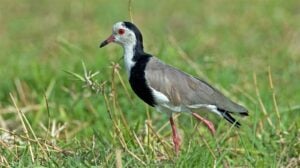A passionate rendezvous unfolds in the north of Namibia where the Chobe River and the Zambezi River come face to face. Nature is a flawless date night planner, with dusk setting the lighting scene in splendid hues of red, orange, pink and purple. A reed frog chorus accompanied by the harmonising melody of the cicada orchestra creates the mood.
The flow of the rivers
Bevan, one of the guides from Chobe River Camp, explains the flow of this romance to us: The Chobe and the Zambezi meet in the east close to Kazungula. When the Zambezi overflows, it pushes water into the Chobe. (Where do the romantics sign up for this kind of empowering relationship?) If the water level is very high, water flows into Lake Liambezi. Lake Liambezi provides the Linyanti River with water. The Linyanti joins the Kwando River, which flows all the way to the Okavango Delta in Botswana.
Backflow may occur when all the catchments become saturated. This phenomenon changes the direction of the Zambezi’s flow. Sitting on the deck at Chobe River Camp on the Namibian side of the Chobe, I am trying to make sense of the flow of the river. Because at some point, upstream becomes downstream – this information seems to have a hard time flowing, but with some more explanations from the local guides, I get the gist of it. Unfortunately, backflow is no hot topic this year, since the lack of water throughout the country even prevails in the usually lush corners of northern Namibia. The only upside is that wildlife comes closer to the lodge to drink, which makes for incredible game viewing opportunities.
The river doesn’t ask questions
I love rivers in general, the Chobe ranking high on my list. For starters, the river don’t talk. The river don’t care where you’ve been, what you’ve done, why it is you’re standing there. It just rolls on by, whispering to your soul, “It’s gonna be alright.” The river just knows. – Rodney Atkins. Again, where do the romantics sign up?
Activities at Chobe River Camp
Rivers are synonymous with adventure, and the Chobe is no exception. The winding Chobe River establishes Botswana’s border with Namibia and forms the upper boundary of the game-rich Chobe National Park. It is the ideal place for water safaris with half-day and sunset boat cruises.
Taking to the waterways by mokoro is a unique experience. In addition to an arm workout, it gives a completely different perspective to the traditional game drive. Here you are placed within the territory of impressive animals, like hippos and crocodiles. Perhaps you’ll even encounter an elephant taking a swim.
What is more exhilarating than not knowing what’s around the next bush or riverbend? And the heart-stopping moment when the first elephant appears on the riverbank? One of many more, of course, since this area is renowned for its high concentration of elephants. Nowhere else in Africa can you encounter more of these massive mammals.
On a walking safari, you will be able to reach places inaccessible by game vehicles. If you pay close attention, you might learn how to track certain game, identify different plant species and discover the extraordinary lives of insects, birds and snakes in one of the most exclusive wildlife areas in Africa.
Of course, this is the ideal location for a quick visit to the Victoria Falls, one of the Seven Natural Wonders of the World.
Where to sign up
Sitting on the balcony of my wooden chalet built on stilts, I catch a glimpse of two tiny animals popping in and out of the water. After closer inspection, I see a spotted-necked otter couple playing in the water. It is a very exciting moment for me, as they occur nowhere else in Namibia.
I would not typically describe myself as a romantic, but these two rivers have wooed me into believing that romance still exists. It comes in different forms, and sometimes in the most unexpected places, such as the passionate rendezvous between the Chobe and the Zambezi. I have found the place where romantics can sign up – it’s called Chobe River Camp.
More interesting facts:
-
The Chobe River is in fact a tributary of the Zambezi River, but the part that crosses through Bostwana is called the Chobe. It forms the Botswana border with Namibia, Zambia and Zimbabwe.
-
The Zambezi River flows through six countries (Zambia, Angola, Namibia, Botswana, Zimbabwe, and Mozambique), covering a full 2700 kilometres.
-
The longest part of the Zambezi River is in Zambia and the shortest part in Botswana.
-
The Zambezi is the fourth longest river in Africa, after the Nile, Congo, and Niger rivers. It is the longest east-flowing river in Africa and flows into the Indian Ocean.
-
The Zambezi River forms the border of Zambia and Namibia, Zambia and Botswana, and Zambia and Zimbabwe.


.jpg)

SUBMIT YOUR COMMENT